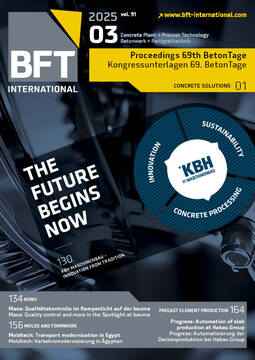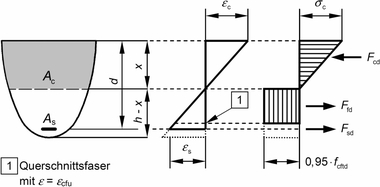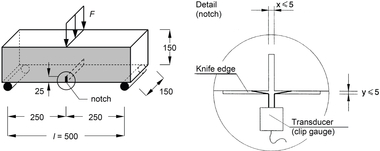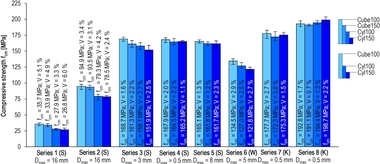Axial and flexural tensile strength of thin members made of ultra-high-performance concrete
When calculating stresses and deflections under service loads as well as when assessing the load-bearing capacity of unreinforced concrete elements subjected to bending, the higher flexural tensile strength value is commonly used instead of axial tensile strength. Flexural tensile strength is a strength parameter dependent on the section depth that implicitly captures the effects of stress redistribution, which takes place in the section upon onset of micro-cracking, thus delaying flexural failure. This effect is more pronounced for small section depths and concrete with high specific fracture energy than for large section depths since the critical crack width is reached more quickly with the latter.
So far, a calculation method for determining the size-dependent flexural tensile strength did not exist for ultra-high-performance concrete (UHPC). Nonetheless, flexural tensile strength is particularly relevant regarding safe and economical design of, for instance, thin UHPC façade panels. To close this gap, a research project [1] funded by the German Committee for Structural Concrete (DAfStb) was conducted in which the axial, flexural, and splitting tensile strength as well as the compressive strength of fine- and coarse-grained UHPC without fibers were determined and related to each other while also considering data taken from the literature. It was found that coarse-grained UHPC tends to show lower axial, flexural, and splitting tensile strength than fine-grained UHPC with comparable compressive strength. For specimens treated with heat or stored under dry climatic conditions, internal stresses reduce the effective tensile strength to a greater extent when the section depth increases. Internal stresses can be prevented by storing test specimens in water. An approach was proposed for calculating the flexural tensile strength of UHPC, which assumes a linear dependence on the section depth (Fig.1). The results should be considered when drafting the DAfStb guideline on ultra-high-performance concrete.
Literatur/References

![Fig 1.: Relation between flexural tensile strength fctm,fl and axial tensile strength fctm as a function of section depth h (from [1])](https://www.bft-international.com/imgs/2/2/0/6/7/5/2/tok_a5e99b4df07af51a659796d5fcbd222f/w300_h200_x600_y425_13_4_Leutbecher_Abb-75f68d39f45e7e42.jpeg)






